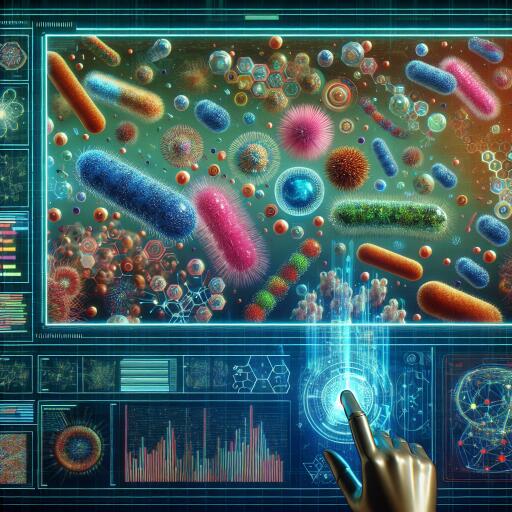How Borderlands Science is Pioneering Microbiome Research Through Gaming
In an unprecedented fusion of video gaming and scientific research, Borderlands Science, a mini-game within Borderlands 3, has made significant strides in understanding the human gut microbiome. This project has involved a massive collaboration of 4.5 million gamers worldwide, propelling forward the study of over a million types of gut bacteria and enhancing the algorithms used in biomedical research.
Unexpected Success in Microbial Evolution Studies
Associate Professor Jérôme Waldispühl from McGill’s School of Computer Science, the senior author of the study, was initially uncertain about the project’s potential. The engagement and accuracy achieved through Borderlands Science have, however, surpassed all expectations. “In just half a day, players generated data that far exceeded what we had achieved with our previous game, Phylo, over a decade,” he marvels.
The project, a collaboration between McGill University, Gearbox Software, and Massively Multiplayer Online Science (MMOS), aimed to leverage the vast reaches of the gaming community for the sake of scientific advancement. Using genomic data from the Microsetta Initiative—The world’s most extensive microbiome project—the game has made significant contributions to understanding microbial DNA sequences.
A Global Citizen Science Endeavor
The idea of integrating DNA sequence analysis within a popular video game was conceptualized by Attila Szantner, CEO and co-founder of MMOS. “Considering nearly half of the global population engages with video games, it’s crucial to harness this spent energy and brainpower for productive scientific ventures,” Szantner states. This innovative approach underlines how video games can transcend entertainment, contributing significantly to resolving some of the biggest scientific challenges of our time.
The study, detailed in Nature Biotechnology, highlights how the refined algorithms generated through this collaboration outperform current state-of-the-art methods in sequencing alignment and microbial phylogeny estimations. Borderlands Science turns players into citizen scientists, enabling the construction of detailed microbial evolutionary histories. This partnership not only advances our understanding of the microbiome but also improves artificial intelligence programs designed for future research.
The Integration of Gaming and Science
Borderlands Science employs a novel approach to its design, prioritizing engaging gameplay while seamlessly integrating scientific data analysis. This alignment task involved over a million 16S ribosomal RNA sequences derived from human microbiome studies, crowdsourced to millions of players worldwide. As Rob Knight, lead on the Microsetta Initiative, elucidates, “This deeper understanding of microbial relationships enables us to link specific microbes to diet, aging, and various diseases, from inflammatory bowel disease to Alzheimer’s.”
The project is part of a broader effort initiated by the American Gut Project and later the British Gut Projects, now collectively known as The Microsetta Initiative (TMI). It draws inspiration from the Rosetta Stone, aiming to decode the complex language of our microbiome for the betterment of human health.
Groundbreaking Results and Future Directions
The gaming community’s involvement has not only supplemented existing genomic data analysis but has also laid a foundation for the advancements in AI research methodologies. The quality and scale of data generated through this unique collaboration have been unprecedented, illuminating the intricate dynamics of the human microbiome like never before.
As we look towards the integration of synthetic data and the exploration of new dimensions in gaming and science, the potential for groundbreaking research grows exponentially. “This project exemplifies the power of open access data and what can be achieved through inclusive scientific practices,” says Daniel McDonald, scientific director of TMI.
With the backing of Genome Canada and Génome Québec, the future of interdisciplinary collaboration between the fields of gaming and scientific research appears brighter than ever. As gamers continue to engage with Borderlands Science, the mysteries of our microbiome and beyond are gradually being unraveled, marking a new chapter in the fusion of science and entertainment.










